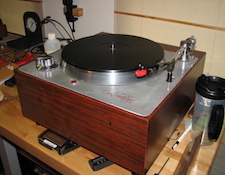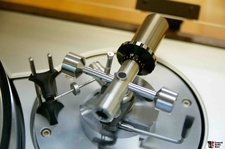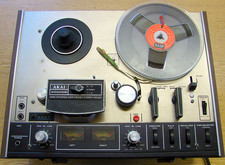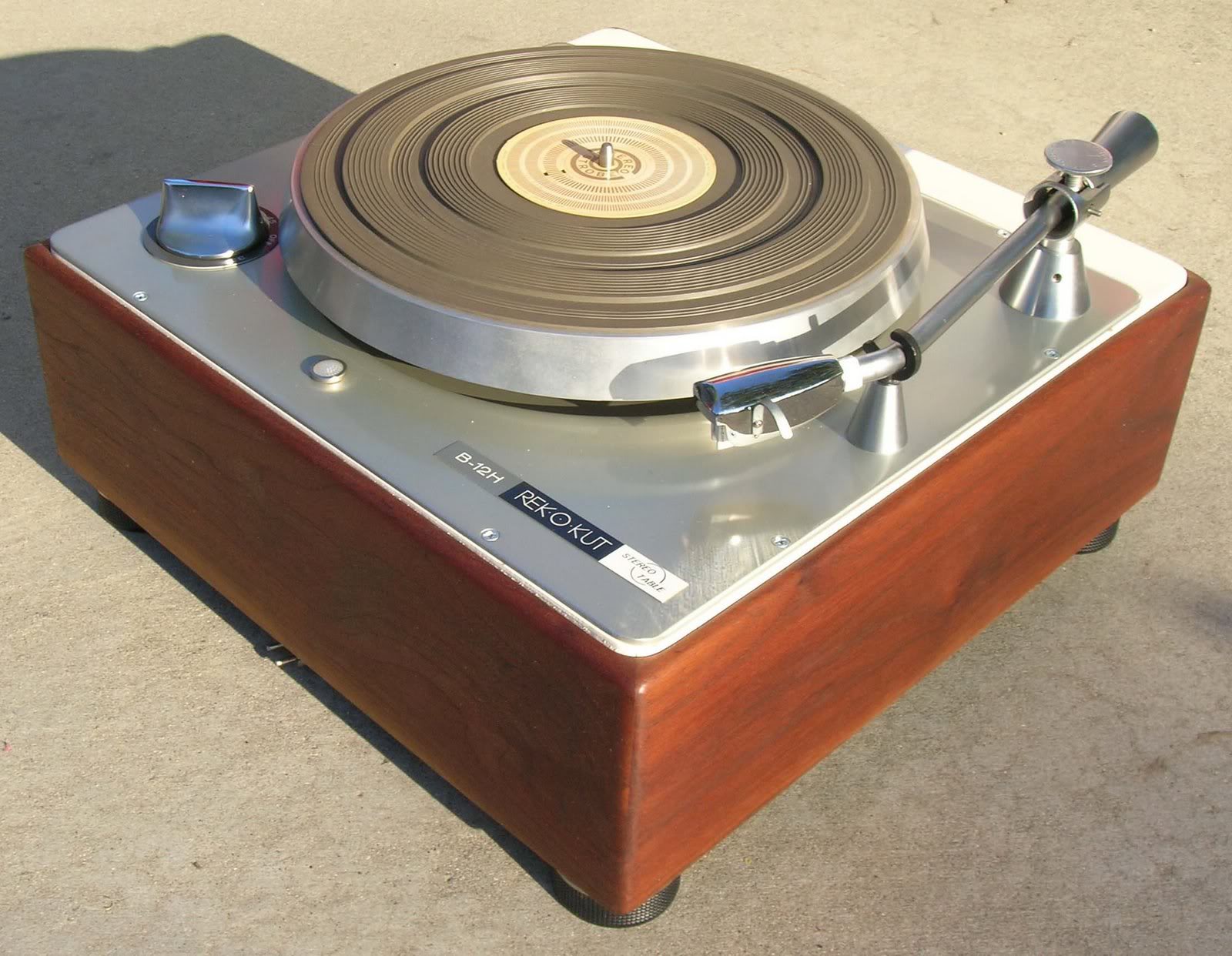It’s the time of year for saving money!
In the last installment (Part 12) of this continuing series of articles on how to get the most for your Hi-Fi dollar, I brought up the idea of buying your Hi-Fi equipment used and took a look at some of the sources of used – or, to use the car dealer’s term, “pre-owned” gear you might want to add to your system.
 Now, I’m going to take a look at used equipment, both in general and by category, to see which of it you might want to give serious consideration, and which you might be better off buying new.
Now, I’m going to take a look at used equipment, both in general and by category, to see which of it you might want to give serious consideration, and which you might be better off buying new.
First, though, I want to say something about that term, “pre-owned”. When a car dealer uses it, it’s with the intent of getting you to believe that the only significant difference between the car they want to sell you now and a new one is that someone else has already owned it. For some cars ― “creampuffs”, the dealers call them ― there really is very little difference between used and new: In “”The duPont Registry”, for example, a very swanky magazine (or web site) of classified ads for “rich kids” (or those who want to look like them) to buy or sell luxury goods, there’s always a broad selection of luxury “creampuff” automobiles available at significantly reduced prices that have EXTREMELY low mileage (often under 10,000) for a vehicle (even one many years old) that can reasonably be assumed to be able to have, with ordinary use and appropriate maintenance, at least ten times that many miles left before any major problems develop.
For cars like that, assuming that they haven’t been in an accident or been vandalized or spectacularly misused (drag or other racing; running without oil; etc.), there really is so little difference between them new and “pre-owned” – especially if the original warranty is still in place and transferable — that buying the “pre-owned” version becomes (unless you really require the assumed prestige of having bought it new), your obvious best choice.
 For High-End audio equipment, it can be very much the same: Solid-state electronics, for example, if they survive their first month or two of operation are likely to run for many years with little or no degradation of performance from new and, if you buy them used, are likely – at least from a performance standpoint — to remain “pre-owned creampuffs” for a good long time. (No, that part about initial survival was NOT an attack on solid-state initial reliability. Early failure can happen to any product, including cars and vacuum tube electronics, and is why virtually all reputable manufacturers provide an initial warranty period when you buy their goods.) Tube electronics, on the other hand – or at least the tubes that they’re made with — are constantly either in the process of “burning-in” or “burning-out”: Either they’re new and still in the process of reaching their performance peak, or they’re older, past their peak, and declining toward their final failure.
For High-End audio equipment, it can be very much the same: Solid-state electronics, for example, if they survive their first month or two of operation are likely to run for many years with little or no degradation of performance from new and, if you buy them used, are likely – at least from a performance standpoint — to remain “pre-owned creampuffs” for a good long time. (No, that part about initial survival was NOT an attack on solid-state initial reliability. Early failure can happen to any product, including cars and vacuum tube electronics, and is why virtually all reputable manufacturers provide an initial warranty period when you buy their goods.) Tube electronics, on the other hand – or at least the tubes that they’re made with — are constantly either in the process of “burning-in” or “burning-out”: Either they’re new and still in the process of reaching their performance peak, or they’re older, past their peak, and declining toward their final failure.
Obviously that’s an important consideration if you’re a potential buyer of used tube electronics: At the prices of tubes in recent years (they used to be just a few bucks apiece, and there were machines to test them in every drugstore and supermarket), it could easily cost you a lot of money and maybe even some “down” time if your newly purchased tube gear needs new tubes and they’re not readily available.
 Except for tubes (and some capacitors, which can also go bad over time) the most likely things to pose a problem for the used-equipment buyer are products that are in any way either mechanical or electro-mechanical. Falling under this category are, obviously, speakers, phono cartridges, turntables, and tonearms – things that openly rely on mechanical motion to either retrieve a recorded signal or turn a played-back signal into sound — but others exist that may be less likely to be thought of, but can also present problems: CD transports or one-box CD or DVD players, especially those based on equipment supplied by Philips, are known to have problems with the internal gears for their opening and closing mechanisms wearing-out and leaving the unit unusable and sometimes even unrepairable, even if their electronics work perfectly – definitely not the sort of thing that you want to invite into your system if failure is near.
Except for tubes (and some capacitors, which can also go bad over time) the most likely things to pose a problem for the used-equipment buyer are products that are in any way either mechanical or electro-mechanical. Falling under this category are, obviously, speakers, phono cartridges, turntables, and tonearms – things that openly rely on mechanical motion to either retrieve a recorded signal or turn a played-back signal into sound — but others exist that may be less likely to be thought of, but can also present problems: CD transports or one-box CD or DVD players, especially those based on equipment supplied by Philips, are known to have problems with the internal gears for their opening and closing mechanisms wearing-out and leaving the unit unusable and sometimes even unrepairable, even if their electronics work perfectly – definitely not the sort of thing that you want to invite into your system if failure is near.
Tape recorders, too – whether the reel-to-reel units seeming to rapidly be regaining popularity, or cassette, or for some other format — can present mechanical problems (worn bearings, heads, tape guides, etc.) even if their electronic performance is up to par, and this is just one more reason why, whenever contemplating the purchase of used gear that can have non-obvious flaws, you should deal only with a reputable source and insist on some kind of performance and/or longevity warranty.
 Other more obvious mechanical problem sources abound in vinyl playback equipment: Turntable spindle bearings can wear if not, or improperly lubricated, drive belts can sag making for uncertain drive speed; drive pucks (Many great old “pro-based” turntables, like the Rek-O-Kut L34 and others, used them) can, if stopped “in position”, have developed a flat spot on one side that will be clearly heard against the music. The same can have happened with the single ball bearing at the bottom of the spindle well, resulting in clearly audible vertical “rumble”. Also, the foam rubber damping for the isolation/mounting springs on turntables like those from Linn and Ariston can have collapsed or crumbled, no longer protecting the ‘table from external shock and vibration.
Other more obvious mechanical problem sources abound in vinyl playback equipment: Turntable spindle bearings can wear if not, or improperly lubricated, drive belts can sag making for uncertain drive speed; drive pucks (Many great old “pro-based” turntables, like the Rek-O-Kut L34 and others, used them) can, if stopped “in position”, have developed a flat spot on one side that will be clearly heard against the music. The same can have happened with the single ball bearing at the bottom of the spindle well, resulting in clearly audible vertical “rumble”. Also, the foam rubber damping for the isolation/mounting springs on turntables like those from Linn and Ariston can have collapsed or crumbled, no longer protecting the ‘table from external shock and vibration.
The tonearm, too, can have bearing problems – especially if it’s a multi-bearing “pantograph-type” like the ones from B&J. (The best bet for avoiding this is to go to a “unipivot” arm, like those first introduced by Pickering, as the “Unipoise”, and that I still own and use in the form of the Stax UA-9. Properly designed, these offer self-adjusting single point support for movement in all directions; never need to be lubricated; and can virtually never fail)
 The three main remaining sources of mechanical problems that you should look out for when considering the purchase of used equipment are 1) the phono cartridge, 2) the turntable set-up (You’d be amazed by how many turntable/tonearm units are set-up poorly; by how much sonic damage poor set-up can do to an otherwise good-sounding phono rig; by how easily many set-up problems can be fixed; and by the “miraculous” sonic improvement that can follow); and 3) the speakers, which, depending on what kind they are, and how old, can offer all kinds of difficulties to the second-hand buyer..
The three main remaining sources of mechanical problems that you should look out for when considering the purchase of used equipment are 1) the phono cartridge, 2) the turntable set-up (You’d be amazed by how many turntable/tonearm units are set-up poorly; by how much sonic damage poor set-up can do to an otherwise good-sounding phono rig; by how easily many set-up problems can be fixed; and by the “miraculous” sonic improvement that can follow); and 3) the speakers, which, depending on what kind they are, and how old, can offer all kinds of difficulties to the second-hand buyer..
I’ll be writing about all of those things and more next time.
See you then.








